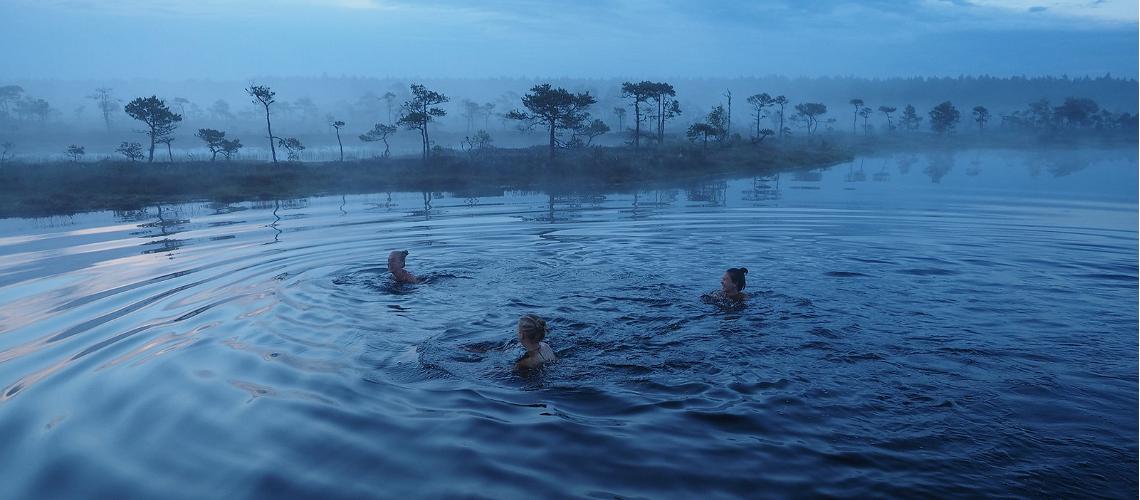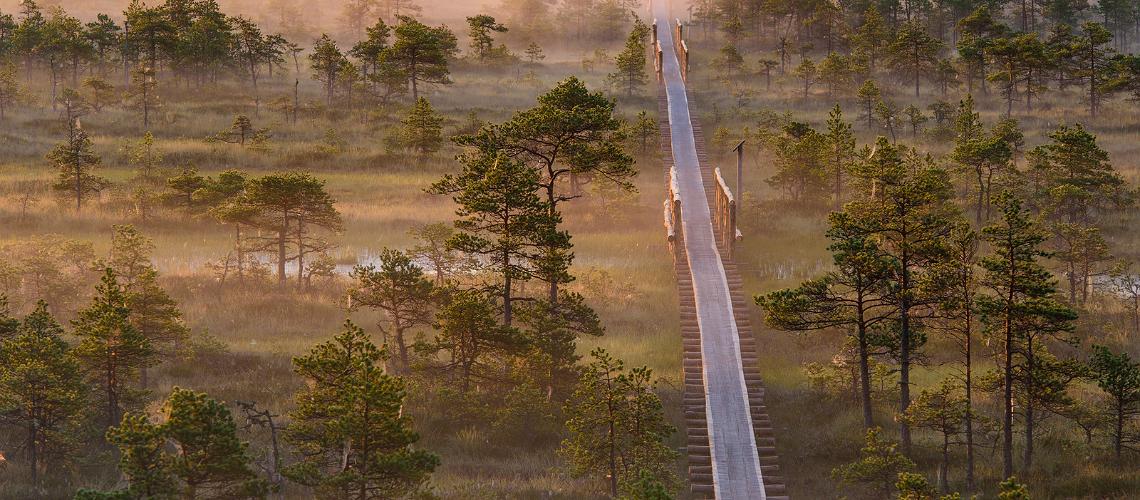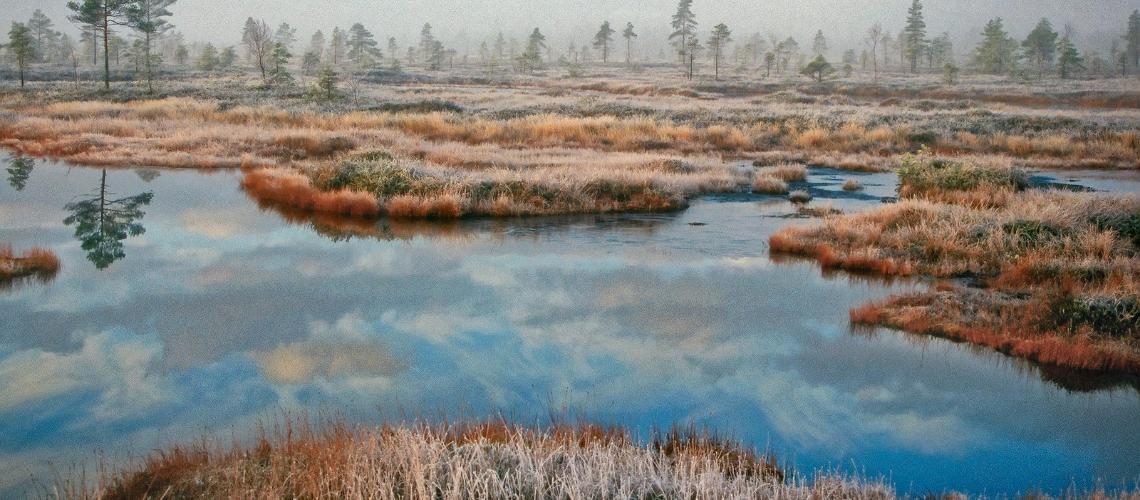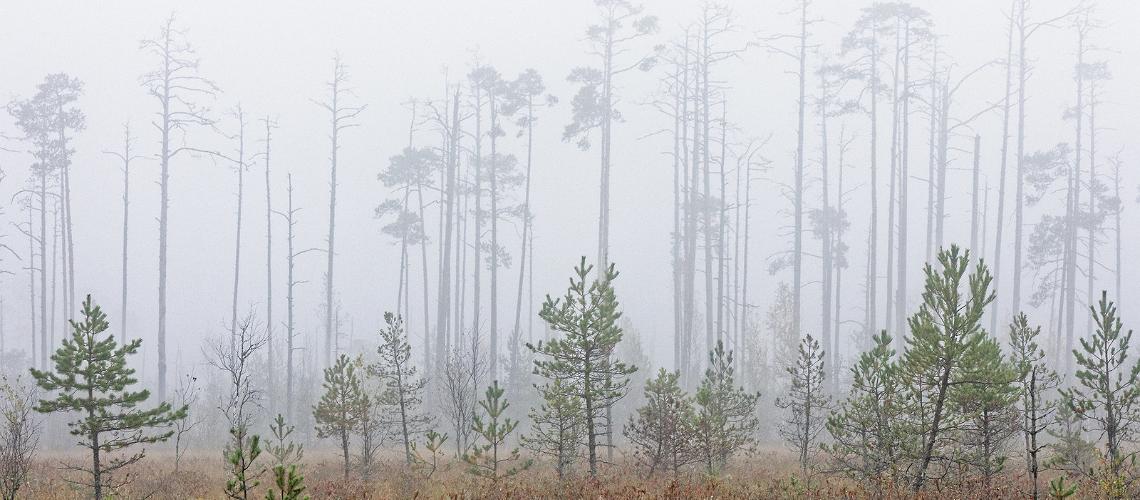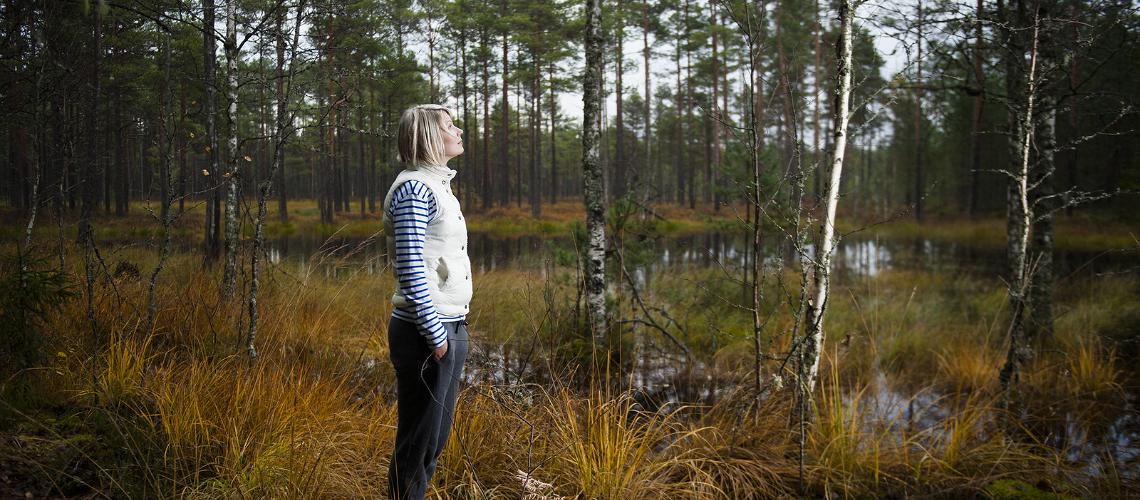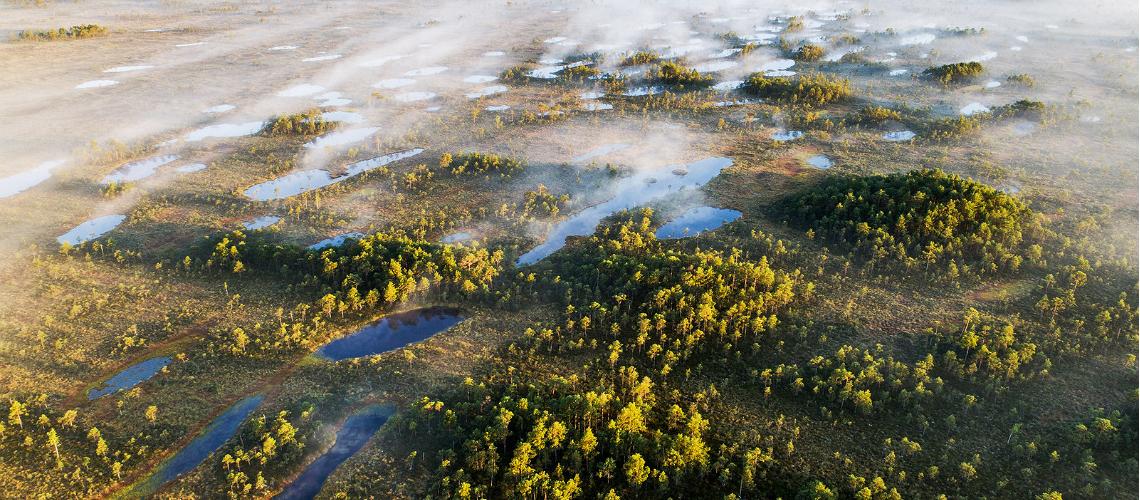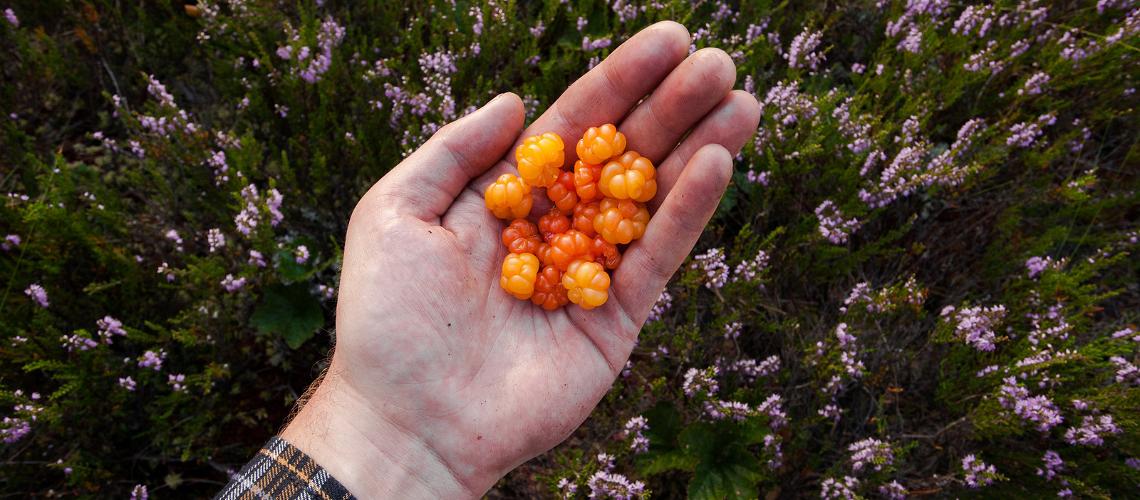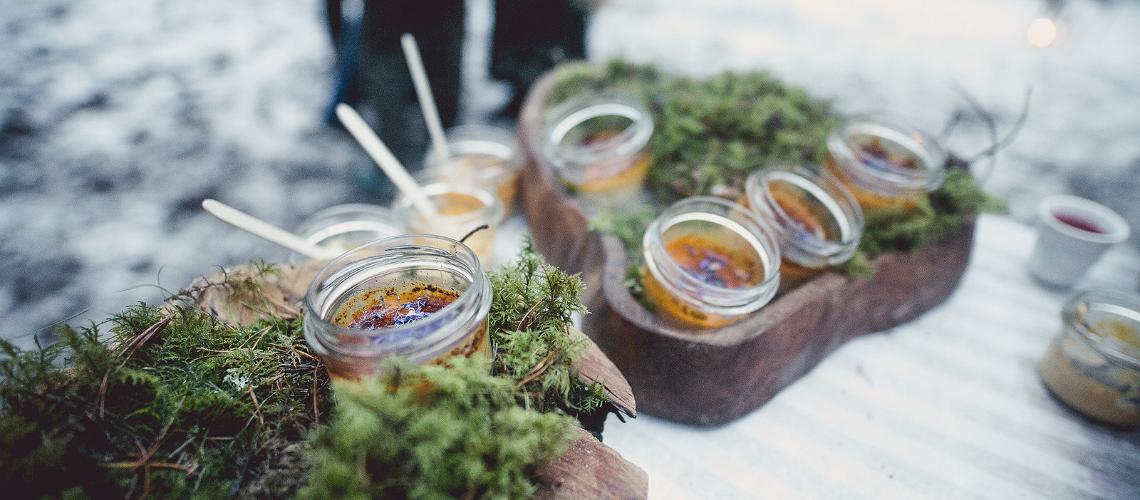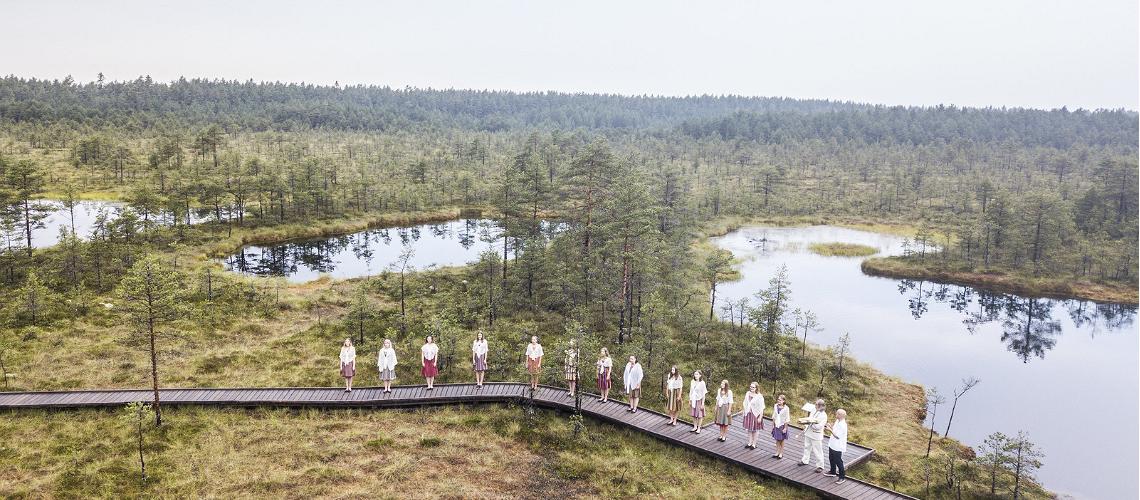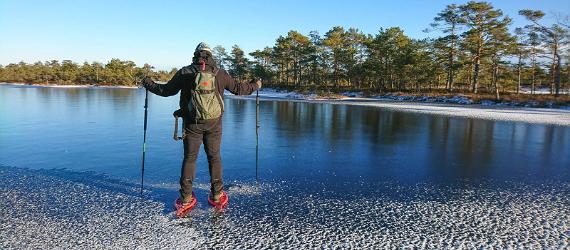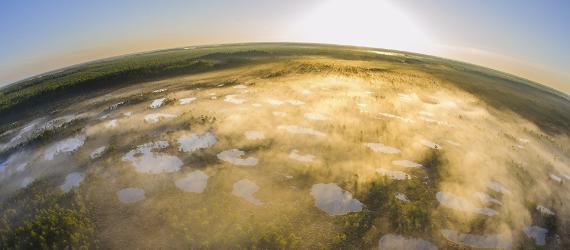Romet Vaino is a tour guide, hobby photographer and a blogger who writes about nature. Recently he put together a complete guide of Estonian mires, bogs and wetlands for any tourist dreaming about hiking there. He'll explain what is a bog, what's the story behind it, when to go there and which bogs to go to.
Estonian bogs have gone through a large-scale transformation from being seen as a horrific place to becoming one of the most loved landscapes. Our bogs are the top-of-the-list attraction for every tourist willing to discover the Estonian countryside and wildlife.
What is a bog?
The bog is the oldest organic landscape in Estonia, reaching in some cases up to 10 000 years of age. The first bogs started to emerge here right after the last ice age. As the 1 km thick glacier ice sheet was melting towards the North pole, the meltwater as a leftover was collected in depressions previously created by the glacier ice. Over the next thousands of years, plants grew and died within those shallow and oxygen-deprived meltwater lakes. As a result, the dead plant material didn't become decomposed but rather created ever-lasting peat/turf and turned the water acidic. Every year, one layer of partially decomposed organic material is accumulated underneath the mossy surface of the bog and this effect has taken place since the very beginning!
In Estonian bogs, the pace at which the peat accumulates is roughly 1 mm annually. In most Estonian bogs, the peat layer is 5-7 meters on average, which equals about 5000-7000 years of age. Over the course of thousands of years, this landscape goes through a series of transformations. At the very beginning, this peat accumulation landscape does not have a significant effect on plants – the peat layer is just too thin and flora is able to reach to the nutrient-rich groundwater. After millennia or two, the peat layer becomes thicker and filters out more demanding plants. The visual of the landscape is about to change. Birch trees will give up and pines will slowly start to take over. This middle stage is called transitional mire.
Later the peat layer gets just so thick that only the toughest plants will survive. The third stage is called bog or raised bog. Here you can see a lot of bog pools or lakes inside this huge organic sponge. The landscape is entirely independent, meaning that the plants don't have access to nutrient-rich groundwater and all they have is rainwater stored in the ground. Bogs can be seen as huge sponges that can store huge amounts of water. Mainly because the sphagnum moss, also known as the "bog builder plant" is able to absorb almost 20 x its body mass. So in some ways, bogs are also giant water reservoirs.
Facts you should know about Estonian bogs
- Oldest bogs are around 9000-10000 years old. The older bogs tend to be located at Southern regions because those spots were released by the glacier ice earlier. But that's not a rule.
- The water in the bogs is acidic because of the sphagnum moss.
- Water is really pure and drinkable, but won't take your thirst away (remember, no minerals/nutrients!)
- The acidic and oxygen-deprived environment in the ground preserves different objects really well, including tanks and even human bodies.
- Some sources say that 22% or 1/5 of Estonia is covered with bogs, fens, and wetlands. That's not true. This number includes all the peat/turf areas, including exploited mining sites. The actual number is somewhere around 6-7%. Most of those landscapes were destroyed by the Soviet Union.
- In the past, local people have been afraid of bogs. Estonian folklore has a lot of associations with the bog or fen-related phenomena.
The story behind Estonians and their bogs
The oldest human settlement in Estonia is the Pulli village or Pulli settlement in South-West Estonia. Scientists believe it to be somewhere between 10 000 – 11 000 years old. As said earlier, the oldest bogs are also 10 000 years old. So it appears that people here have been developing together with the landscape, which is not very common in other parts of the world.
Estonians have seen the rise of the first bogs as well as the birth of the forests. This could be the reason why we have so strong bond to our nature. It's reflected in our culture as well. For example, we have a disproportional amount of words describing natural sounds (wind and water). Although we have the longest relationship with bogs, it has been anything but stable. Interestingly enough, the perception of bogs among local people has been in constant change. The way people see the bog today was unheard of 100 years ago.
Bog as a source of food
In the very beginning, before the mosses took over the shallow meltwater lakes, our forefathers used those areas as a water path to navigate from one place to another. Remember – the ice age had just ended and a significant part of Estonia was below water level. In the next few thousand years, the plants took over and started to form this spongy ever-growing peat layer.
It appears that as the water areas turned into this weird hybrid landscape and people started to avoid it. Mostly because it was easy to sink in and getting through the bog was real challenges. Besides physical difficulty, this homogeneous landscape was tough to navigate. Everything looked very similar and there were no pinpoints to rely on.
One of the few people who visited bogs back then were hunters. It might be surprising, but the heaviest animal in Estonia – a moose – prefers to use bogs and wetlands as its habitat. Open field and challenging terrain provide it space and shelter. Besides moose, different species of grouse prefer to live in this wetland as well. So those early tribes of hunter-gatherers had to find their way to bogs. According to the findings of Pulli settlement, those early tribes hunted mostly beavers and moose. Hunting was men's duty, so we can assume that a significant part of those early communities didn't get to experience bogs at all. They just had to rely on the stories of others.
Bog as refuge
Estonians lived as pagans up until the 13th century when a huge campaign was organized by Swedes, Danes, and Germans to conquer the Eastern region of the Baltic Sea and to bring Christianity along.
Historians claim that at the time, the Estonian strongholds provided shelter to 6-9% of the entire population. As a result, 90+% of the Estonians had to rely on natural refuges. What place could be better to hide than the bog? Difficult terrain, easy to sink in (especially with horses and heavy artillery), easy to get lost... Suddenly, terrifying bog turned into a shelter. The perception had changed.
You may wonder where could people hide in an open space. The answer is bog islands. Bog island is a hill, that rises above the mossy surface of the bog. This hill consists of gravel, sand, etc. and is basically a mineral land. Therefore it's like an oasis in the desert. Usually, bog island is covered with tall forest and provides a way more food than the bog.
Eager to read more? Read the full guide!















